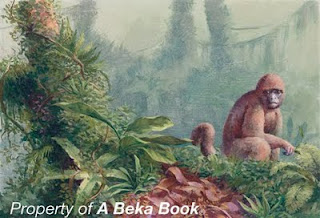Especially with historic and educational illustration, detail makes or breaks the illustration. With historic illustration, the clothing and the environment indicate the era, and the reader should never wonder when and where the story happens. Textbook illustration, of course, teaches through the pictures, so the pictures need to be well-researched with a lot of visual data.
Detail is difficult for most artists to create. It takes time and thought to produce accurate, appropriate detail. My first detailed illustration took too long to paint, but the next one went much faster. Now detail has become a part of my working method.
If it looks as if I spent too long on this illustration, it’s probably true. I also squeezed just about every toy that I have ever played with or ever wanted to own. The illustration showed a big problem that most kids understood: a messy room. The successive images showed how the boy broke his problem into smaller steps to clean up the mountain of a mess. The detail not only provides an interesting viewing experience, but it also makes the boy's problem very tangible.
This illustration shows how the thylakoid membrane in plant cells help change light energy into stored energy. The detail is necessary so the students understand the process. However, the detail must be managed so the students do not get overwhelmed.
I enjoyed creating this series of birds and plants based on the state birds and state flowers. This small sample shows Nevada, Arizona, and Delaware. Other illustrators contributed to the whole series.
Charts and graphs can become uninteresting to students so detail helps create interesting moments like this.
Some charts, like this one showing the herbivore-carnivore-detrivore food cycle, can be reduced to one interesting image with arrows and a brief explanation.
Not only do scientific illustrations need detail, but historical illustrations also need a significant amount of detail. If historical illustrations do not show real detail, misconceptions can occur. I try to find photos or paintings of famous people’s faces and use their proportions in the illustrations. (To see how I would do this, consult the end of my demo.) I would hope that a historian that studies Helen Keller would recognize her immediately in this illustration. I also researched the furniture in the house to get everything correct.
I wanted to show the conflict between two different worlds in this illustration. The Catholic cross contrasts with the Aztec shield. I rendered this as a traditional pen and ink illustration with a simple color wash.
This story did not have a particular setting. However, based on the names in the story, I set it in ancient Sweden to give the story visual validity.
This is set in a large city in South America, so I had a friend translate "Do not shoplift" into some equivalent Spanish phrase. I hope it matches the rough part of the city and the rough rendering of the painting. Detail does not have to consume the whole painting. Instead, the artist provides just enough detail to establish the believability of his work.
A favorite illustration of mine, above, shows the ancient Israelites traveling to Jerusalem for a yearly festival. Though the style is simple, the precise detail in what is portrayed and the amount of simple detail shows the world at the time of Christ.











No comments:
Post a Comment